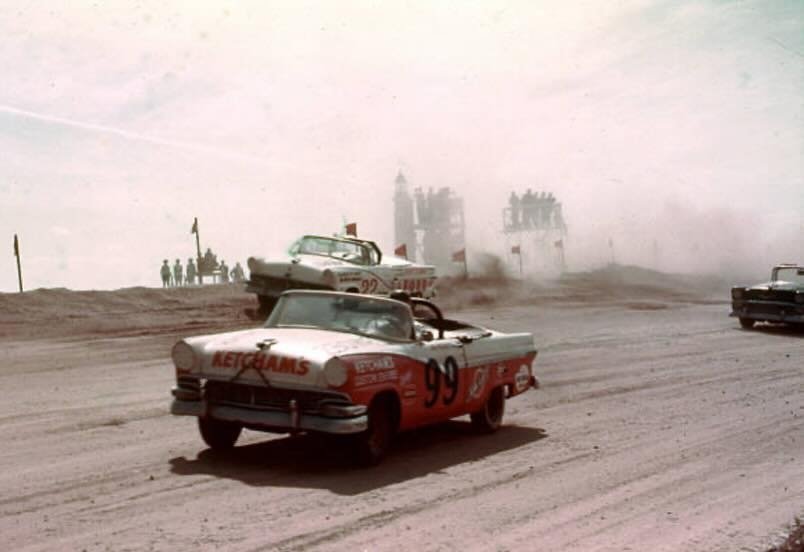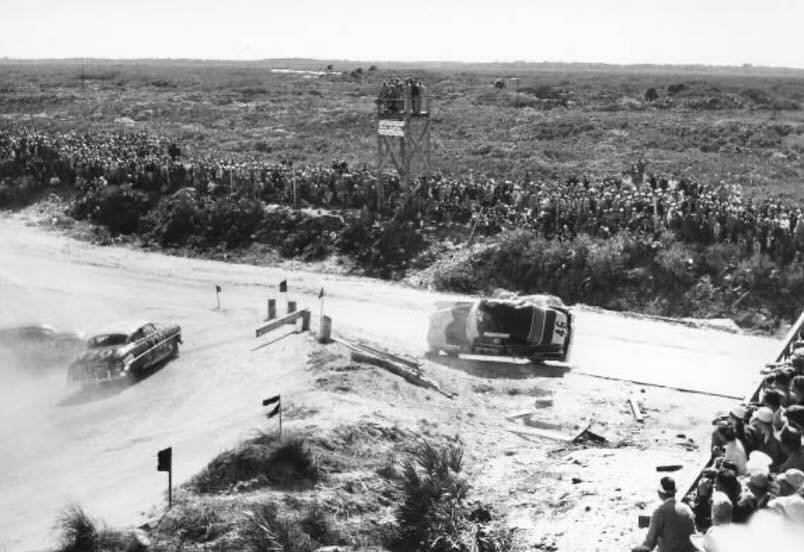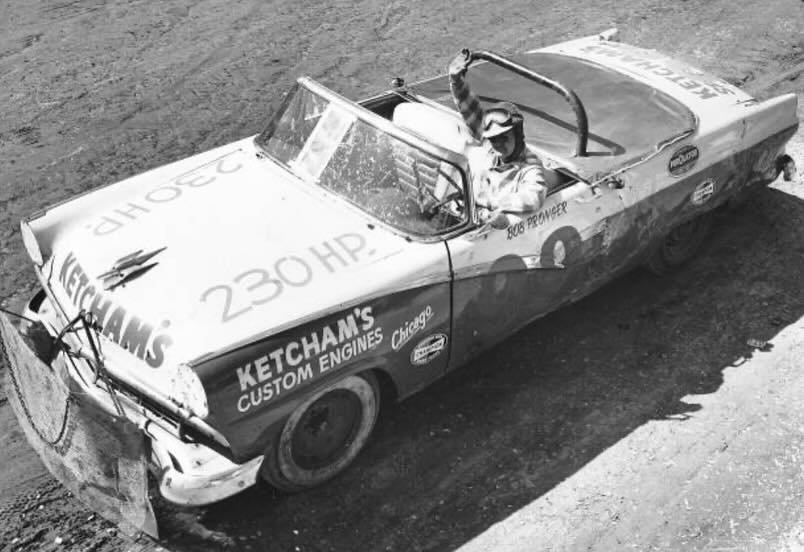Reporting Live on NASCAR’s Wildest Mystery: The Disappearance of Bob Pronger
NASCAR has always been rich with stories, some so unbelievable they seem plucked from a movie script. From the mysterious sabotage rumors at Talladega in 1974 to the chilling unsolved murder of racing icon Mickey Thompson and his wife, the sport has seen its share of drama. But few tales rival the enigmatic disappearance of Bob Pronger, a larger-than-life figure whose off-track dealings were as intense as his racing career.
Who Was Bob Pronger?

Standing at a towering six-foot-six, Bob Pronger was impossible to miss. Born in Blue Island, Illinois, on January 22, 1922, Pronger burst onto the racing scene in 1949 at Chicago’s Raceway Park. Known for his aggressive driving style, he quickly became a fan favorite, securing numerous wins and championships.
While Pronger’s stint in NASCAR’s Grand National Division (now the Cup Series) was brief—just nine starts from 1951 to 1961—he made his mark. His best finish was 15th in a Daytona 500 qualifier in 1961, and he also shone in NASCAR’s Convertible Division, achieving a career-best third-place finish. One of his most memorable moments came in 1953 at the Daytona Beach and Road Course, where he shattered the measured-mile record in qualifying. However, his refusal to undergo an engine inspection cost him recognition, adding controversy to his achievements.

Off the track, Pronger’s life was steeped in intrigue. His links to Chicago’s underground chop shop scene were no secret. Alongside his brother, John Pronger, Bob was rumored to be deeply involved in stolen car operations. This dual identity as a racing champion and alleged criminal made him both fascinating and polarizing.
The Day He Vanished
By 1971, Pronger’s life took a darker turn. That May, he reported two attempts on his life—one involving gunshots while he was driving and another at his apartment. Despite the threats, Pronger carried on with his usual activities, dividing his time between racing and his questionable ventures.

On June 17, 1971, Pronger dined at his favorite spot, the Rainbow Restaurant in Calumet Park, Illinois. It was the last time anyone saw him. He missed a race that weekend, and by June 22, his family reported him missing. Shortly after, a decomposed body was discovered under a mattress in the woods near Griffith, Indiana, close to his home. But due to the lack of reliable identification methods, authorities cremated the remains without confirming if they were Pronger’s.
The mystery deepened with reports that Pronger was set to testify before a federal grand jury about his involvement in a stolen car parts ring. Many speculated his criminal connections had caught up to him. In 1979, an informant implicated William “Bill” Dauber, another notorious figure, in Pronger’s murder. Dauber and his wife were later assassinated in 1980, leaving Pronger’s case unsolved.
Racing Legacy and Controversy
Despite the turmoil surrounding his life, Bob Pronger’s racing accomplishments remain undeniable. He was a dominant force at Chicago Raceway Park, earning his first championship in 1961 with an impressive 23 feature race wins. He also won the prestigious 300 Lap Classic twice, in 1953 and again during his championship season.

Pronger’s adaptability set him apart, excelling in everything from pre-war cars to Cadillacs and Oldsmobiles. His 1953 Daytona Beach performance, where he set an American Stock Car record for the measured mile at 113.38 mph, was a career highlight. But even this moment was marred by controversy when he refused an engine inspection and allegedly struck an official in frustration.
A Mystery That Endures
Decades later, Bob Pronger’s disappearance remains one of NASCAR’s most perplexing unsolved cases. With no confirmed identification of his body and no charges ever brought in connection to his presumed murder, the mystery lingers. Was Pronger a victim of his criminal ties, or was there an entirely different twist to his fate?
Whatever the truth, Pronger’s story remains an unforgettable chapter in NASCAR lore—one that perfectly embodies the sport’s unpredictable and dramatic history.



